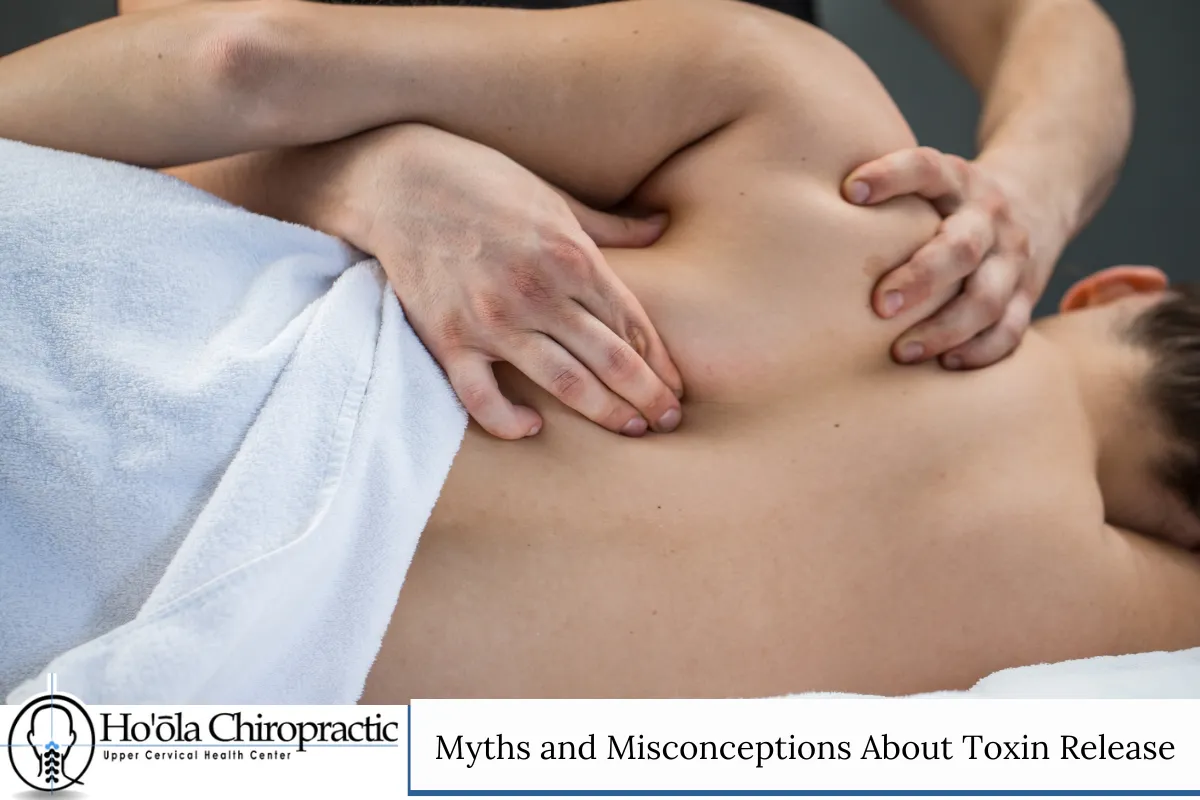Discovering the Role of Chiropractic Care in Wellness
If you’re searching for a chiropractor in Oahu, you may have heard claims about “toxins” being released after a chiropractic adjustment. Many patients seek chiropractic care for pain relief, improved mobility, and overall health—but questions remain about what really happens inside the body during and after an adjustment. Are toxins actually released? What are these substances, and should you be concerned? In this article, we’ll break down the science behind chiropractic adjustments, what the term “toxins” actually refers to, and how this process may benefit your health. By the end, you’ll have the clear, evidence-based information you need to make informed decisions about chiropractic care.
The Science Behind Chiropractic Adjustments
What Happens During a Chiropractic Adjustment?
Chiropractic care involves a series of hands-on spinal manipulations and adjustments that aim to restore joint mobility, correct alignment, and reduce pain. When you visit a chiropractor, the professional uses their hands or specialized instruments to apply controlled force to a spinal joint. The intent is to improve physical function, alleviate pain, and support the body’s natural ability to heal.
During the adjustment, you might hear a popping or cracking sound. This sound, known as cavitation, is caused by the release of gas bubbles (mostly nitrogen and carbon dioxide) from the synovial fluid within your joints. It’s a common, harmless effect that indicates the joint has moved.
The Connection Between Adjustments and Toxin Release
There’s a popular claim that toxins are released from your body following a chiropractic adjustment. This idea is often promoted in holistic wellness circles, but what does it mean? In chiropractic and medical literature, “toxins” are not strictly defined. The term is sometimes used to describe metabolic waste products, cellular debris, or byproducts of inflammation that accumulate in the body’s tissues.
Scientific Perspective on Toxin Release
Medical experts agree that the body naturally detoxifies itself through organs like the liver, kidneys, and lymphatic system. However, chiropractic adjustments may stimulate increased blood flow and lymphatic drainage, which can support the body’s own detoxification processes. This can potentially lead to the release of stored metabolic waste—often perceived as “toxins”—from the muscles and soft tissues into the bloodstream, where they are processed and eliminated.
What Are the “Toxins” Released After a Chiropractic Adjustment?

Defining Toxins in the Context of Chiropractic Care
In chiropractic practice, the term “toxins” is loosely applied to several substances that may be stored or released during physical manipulation. These include:
- Lactic acid: A byproduct of muscle activity that can build up during periods of muscle tension or poor circulation.
- Cellular debris: Particles from damaged or dead cells resulting from inflammation or injury.
- Metabolic waste products: Compounds produced by normal cellular metabolism, including urea and carbon dioxide.
- Pro-inflammatory cytokines: Small proteins released by immune cells that contribute to inflammation and tissue repair.
When joints or muscles are manipulated, improved circulation may help flush these substances out of the tissues, facilitating their removal by the body’s detoxification organs.
Understanding Post-Adjustment Reactions
Some patients report mild symptoms after a chiropractic adjustment, such as headaches, fatigue, muscle soreness, or even flu-like symptoms. These experiences are often attributed to the “toxin release” effect, though in reality, they are more likely related to changes in circulation, nervous system stimulation, and physical realignment of tissues.
These symptoms are typically short-lived and subside within 24–48 hours. They are considered a normal response to physical therapy and are similar to what you might experience after a deep tissue massage or intense workout.
Exploring the Detoxification Pathways
How the Body Naturally Removes Waste
The human body is remarkably efficient at detoxification. The main organs responsible for this process are:
- Liver: Breaks down toxins and prepares them for excretion.
- Kidneys: Filter waste from the blood, producing urine.
- Lymphatic system: Moves waste and immune cells through lymph fluid.
- Skin and lungs: Eliminate certain waste products via sweat and exhalation.
Chiropractic adjustments may support these natural processes by improving blood and lymph flow, reducing inflammation, and supporting the body’s nervous system. However, the adjustments themselves do not “detoxify” the body in the way some alternative health sources suggest.
Lymphatic System and Chiropractic Care
The lymphatic system plays a key role in immune function and detoxification. It transports white blood cells and removes cellular waste. Restricted joints or tight muscles can slow lymphatic flow, potentially causing waste products to accumulate. When a chiropractor in Oahu performs an adjustment, improved mobility may enhance lymphatic drainage, helping the body process and eliminate metabolic waste more efficiently.
Read Chiropractor in Oahu: Should You Let a Chiropractor Adjust Your Neck?
Myths and Misconceptions About Toxin Release

Is There Evidence for Toxin Release After Chiropractic Adjustments?
Scientific studies have not confirmed the presence of harmful toxins being released following spinal adjustments. Instead, most evidence points to increased circulation and temporary mobilization of waste products—much like what happens during physical exercise or massage therapy.
Common Myths:
- Chiropractic adjustments “flush out” toxins: While they may promote better circulation, there’s no scientific proof that adjustments directly expel toxins.
- Post-adjustment symptoms mean toxins are leaving your body: Mild symptoms are generally related to the body’s response to physical manipulation, not to detoxification.
- You must detox after every adjustment: The body is already equipped to handle everyday waste and does not need special detox regimens after chiropractic care.
What Patients Should Really Expect
Most people experience only positive effects from chiropractic care, including reduced pain, improved mobility, and a sense of well-being. Any post-adjustment symptoms are usually mild and temporary.
How Chiropractic Adjustments May Support Overall Health

Benefits Beyond Pain Relief
While pain management is a leading reason people seek a chiropractor in Oahu, chiropractic care may offer additional health benefits:
- Improved range of motion: Restoring joint function helps you move more freely and with less discomfort.
- Reduced muscle tension: Releasing tight muscles can improve posture and prevent future injuries.
- Better nervous system function: Spinal alignment can positively impact the body’s communication pathways.
- Enhanced circulation: Improved blood and lymph flow helps with overall tissue health.
When to Consider Chiropractic Care
Chiropractic care can be an effective complement to conventional medicine for many conditions, including:
- Back pain
- Neck pain
- Headaches and migraines
- Sciatica
- Sports injuries
However, it is important to consult with a licensed chiropractor to discuss your health concerns and ensure you receive the most appropriate care.
Tips for Supporting Your Body After an Adjustment
How to Maximize the Benefits of Chiropractic Care
To support your body’s natural processes and help alleviate any mild post-adjustment symptoms, consider the following tips:
- Stay hydrated: Drinking water helps flush waste products through the kidneys and supports overall health.
- Engage in light activity: Gentle movement can enhance circulation and prevent stiffness.
- Rest when needed: Listen to your body and allow time for recovery if you experience soreness.
- Eat a balanced diet: Nutritious foods support the body’s detoxification systems.
- Communicate with your chiropractor: Report any unusual or persistent symptoms to your healthcare provider.
Chiropractic Care in Oahu: What to Expect From Your Visit

The Patient Experience
When visiting a chiropractor in Oahu, your first appointment will likely involve a thorough health history, a physical exam, and possibly imaging studies (like X-rays) to assess your condition. Your chiropractor will discuss your symptoms, health goals, and create a personalized treatment plan.
During your adjustment, you may feel pressure or a gentle pop as your joints are mobilized. Most people find the experience comfortable and even relaxing. Your chiropractor may also provide guidance on stretches, posture, and exercises to support your recovery.
Finding the Right Chiropractor
Look for a licensed, experienced chiropractor in Oahu who:
- Listens to your concerns
- Clearly explains the treatment process
- Provides a tailored care plan
- Answers your questions about health, recovery, and wellness
Many chiropractors offer free consultations, making it easier to find the right fit for your needs.
Staying Healthy with Regular Chiropractic Care
Preventing Problems Before They Start
Regular chiropractic care can play an important role in maintaining spinal health, preventing injuries, and supporting your overall well-being. By addressing minor issues early and promoting optimal movement, you can enjoy a more active, pain-free lifestyle.
Consider scheduling periodic check-ups with your chiropractor to:
- Monitor spinal health
- Address any emerging pain or stiffness
- Get advice on posture, exercise, and lifestyle habits
Chiropractic care is not just about pain relief—it’s a proactive approach to lifelong wellness.
Chiropractor in Oahu - Ho'ola Chiropractic

Experience expert chiropractic care at Ho'ola Chiropractic, your trusted chiropractor in Oahu and Honolulu. If you want to feel your best, recover from pain, or support your body’s natural healing after a chiropractic adjustment, our dedicated team is here to help. We offer personalized care that targets your unique needs, using proven techniques to relieve discomfort, improve mobility, and promote wellness. Conveniently located in Honolulu and serving surrounding areas, Ho'ola Chiropractic welcomes new patients and provides a comfortable, supportive environment. Ready to take the next step toward better health? Call us today at (808) 772-8284 or fill out our easy online contact form to schedule your first visit and start your journey to wellness.
Frequently Asked Questions
1. Can everyone benefit from chiropractic adjustments, or are there risks for some people?
While many individuals experience benefits from chiropractic care, certain groups should approach it cautiously. People with severe osteoporosis, spinal cancer, increased risk of stroke, or specific spinal abnormalities may need alternative treatments. Always consult a healthcare professional before starting any new therapy, and share your full health history with your chiropractor to ensure your safety.
2. How soon will I feel results after a chiropractic adjustment?
Most patients notice some improvement in symptoms after the first few visits, such as reduced pain or greater mobility. The speed of results depends on the individual, their condition, and how long the issue has been present. Chronic issues may take longer to resolve. Regular follow-ups and following your chiropractor’s advice will help maximize your results.
3. Is it safe to have chiropractic adjustments during pregnancy?
Chiropractic care can be safe and beneficial during pregnancy, especially for alleviating lower back pain and improving pelvic alignment. However, adjustments are typically modified for pregnant patients, and it’s essential to work with a chiropractor experienced in prenatal care. Always consult your OB/GYN before starting chiropractic treatments while pregnant.
4. What should I do if I feel worse after a chiropractic adjustment?
It’s common to experience mild soreness, fatigue, or headache after an adjustment—similar to what you might feel after starting a new exercise routine. These symptoms usually subside within 24–48 hours. If you experience persistent pain, unusual symptoms, or worsening of your condition, contact your chiropractor promptly to discuss your concerns and adjust your care plan if necessary.
5. Can chiropractic adjustments help with conditions other than back and neck pain?
Yes, chiropractic care is often used to support overall wellness and can help manage headaches, joint pain, muscle tension, and even issues related to posture or repetitive strain. Some patients also report improvements in sleep, stress management, and athletic performance. However, chiropractic care is not a substitute for medical treatment of serious illnesses or injuries. Work with your chiropractor and primary care physician to coordinate comprehensive care.




